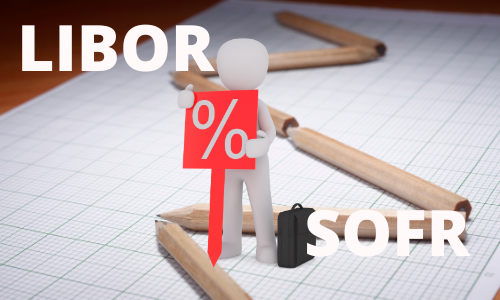LIBOR Transition– Impact on Indian corporates
Uploaded on: 22nd January 2022

LIBOR is phased out from December 2021. Each country has introduced its own alternate risk-free rates (RFR). For US dollar-denominated loans and securities, the new benchmark is SOFR, which is replaced by USD LIBOR as the primary global benchmark rate.
| Country | LIBOR Rate | New Risk-Free Rate |
|---|---|---|
| US | LIBOR | SOFR |
| UK | LIBOR | SONIA |
| Japan | TIBOR, JPY LIBOR and Euro yen TIBOR | TONA |
| Euro Area | EURIBOR and EUR LIBOR | ESTER |
| Canada | CDOR | CORRA |
| Switzerland | CHF LIBOR | SARON |
| Australia | BBSW | RBA Cash Rate (AONIA) |
| Hong Kong | HIBOR | HONIA |
SOFR (Secured Overnight Financing Rate) – is an overnight rate in the repo market with treasuries as collateral. It is administered by the NY Fed and calculated as a volume-weighted average of transactions in the repo market – both bilateral, GC repos, and BONY data. It is a collateralized rate; hence it does not reflect the credit risk of interbank funding and cannot have a credit risk term structure like LIBOR.
By nature, it is more volatile than the Effective Fed Funds Rate and tends to be more so during the quarter and financial year ends. Given its behavior, during panic times (where it actually can move lower depending on the Fed action) it is still debatable whether the SOFR, as it stands now, would be able to fill its role as a funding alternative to banks. Various possible approaches are still being debated as to how to transfer a “credit risk embedded” benchmark such as Libor to a risk-free benchmark such as SOFR. ISDA is in the process of floating a protocol to address the change in definitions of Libor benchmarks automatically so that en masse changes to confirmations can be avoided.
From a corporate perspective, two major issues need to be looked at with regard to this transition.
- What would happen to the existing deal MTM?
- Would there be a scenario where the hedge ceases to be effective?
As for the first part, discussions are on to ensure that the Libor transitions to the new benchmark at a spread common across the market to avoid any undue MTM changes. ISDA has proposed that median historical spread be used to convert the Libor into SOFR. Hence, for instance, an IRS with a 0.5% fixed against Libor might simply transition to 0.5% against SOFR+spread. The INR market benchmarks such as MIFOR should also adjust to ensure market-value neutrality.
The second question is a more challenging one for companies. There are still debates on the “cash” side of the market (loans, bonds, etc) as to whether SOFR can be transitioned as being discussed for derivatives. While the endeavor would be to ensure that there are no discrepancies between the cash and derivative markets, the final jury is still out on whether there would be no dissonance at all. Issues related to the effectiveness of hedges for accounting purposes, a potential discrepancy of the hedging benchmark versus the loan benchmark, etc. are worrying companies.
Adding to the uncertainty, certain benchmarks such as AMERIBOR are being floated as alternatives to LIBOR for funding purposes. If cash markets pick up on such alternatives, appropriate basis swaps with respect to SOFR also need to come up quickly for ensuring the hedge effectiveness of existing trades.
LIBOR transition is the biggest transition in financial market history. Even as the deadline is fast approaching, the situation is still fluid, especially around the bank funding element. Some clarity could emerge during the early part of the next calendar year.
